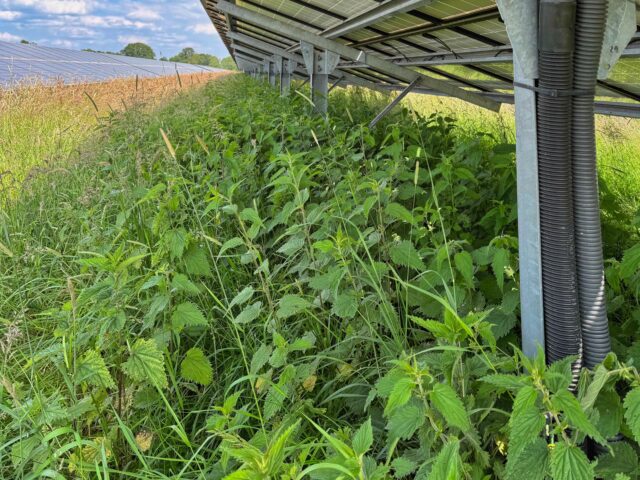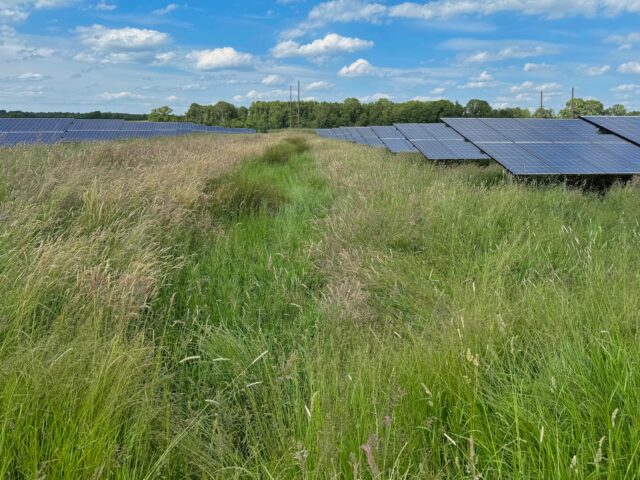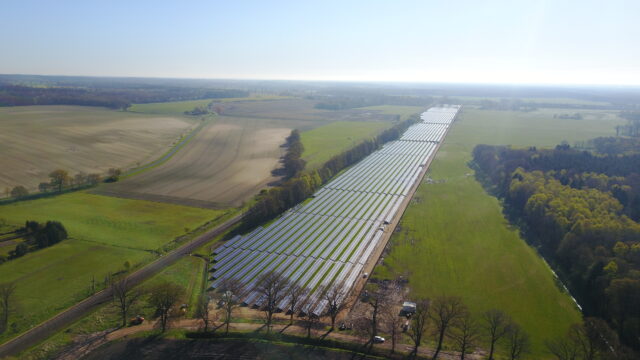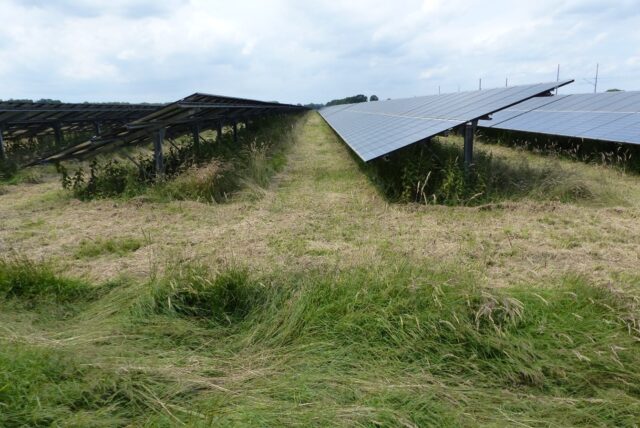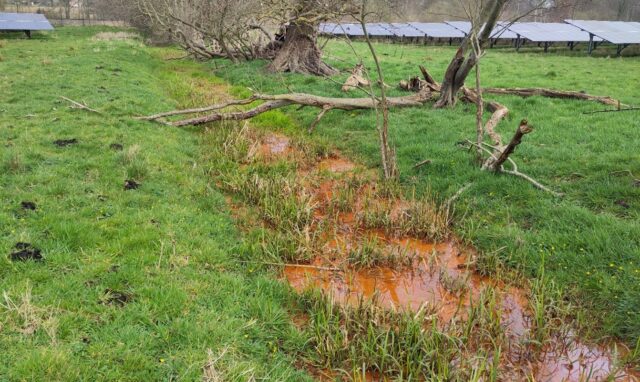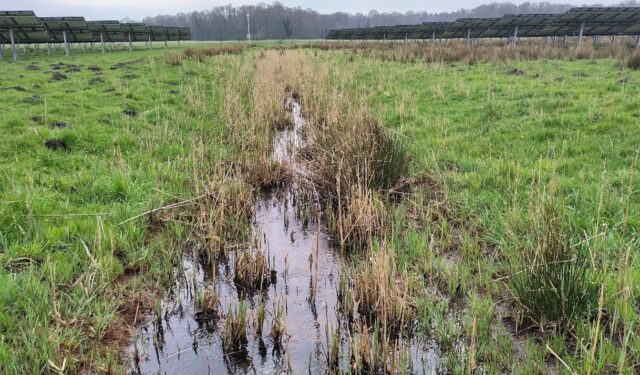Melkof solar park
The Melkof solar park operated by solar-konzept GmbH is located in the district of Ludwigslust-Parchim in Mecklenburg-Western Pomerania between the villages of Melkof in the east and Düssin in the west. The plant was commissioned in 2017 and extends from east to west over a length of around 2,160 metres. The average width is around 110 metres and the area is just under 12 hectares. The rows of modules are relatively close together with a gap of around 3 metres between them.
The investigation area within the scope of the study also includes the "Düssin" section, which is identical in construction and directly adjoins the Melkof solar park to the west. This has an area of 10 hectares, meaning that the study area covers a total of 22 hectares. It is a contiguous site through which the municipal boundary runs.
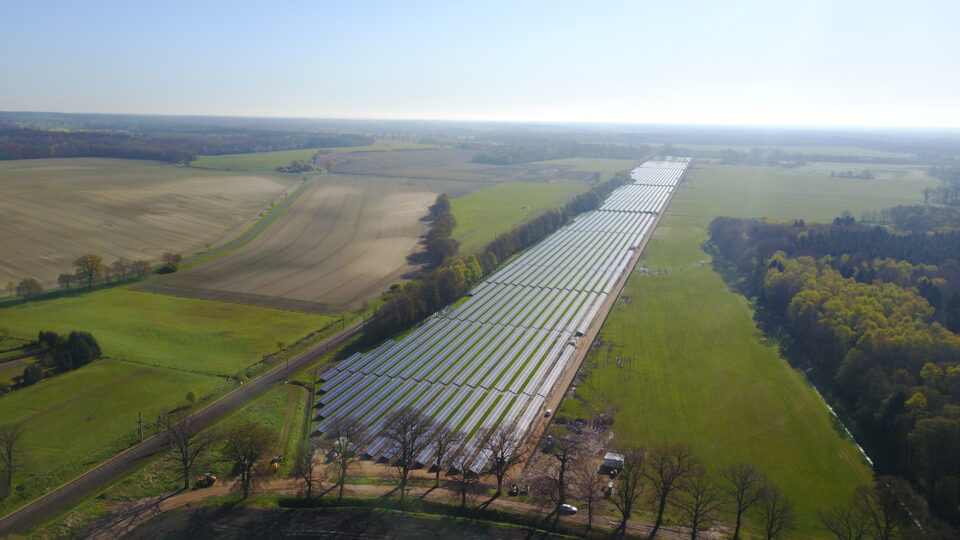
Solarkonzept GmbH
8.8 MW
12 ha
2017
Mecklenburg-Western Pomerania
53.3571967165 - 11.0113584806
Grassland
Table of contents
| Species groups | Investigated |
|---|---|
| Plants | ✔ |
| Locusts | ✔ |
| Butterfly | ✔ |
| Dragonflies | |
| Reptiles | ✔ |
| Amphibians | |
| Birds | ✔ |
| Bats | |
| Miscellaneous |
✔ = Investigation carried out on behalf of the operators
Natural environment and special features
Mecklenburg-Brandenburg plateau and hill country and Luchland
The Hamburg - Berlin railway line is located directly on the northern edge of the PVA. About half of the west-east extension of the site borders directly on the railway line in the north and on an approx. 30 metre wide strip of woodland. To the south and north of the PVA are agricultural areas used for arable farming and grassland. There are also wooded areas in the wider vicinity of the plant. The area to the south of the plant has a somewhat richer structure. Here, the forest areas are closer to the plant and there is also a compensation area with numerous bodies of water to the south-east.
The slope of the terrain is flat, although the terrain slopes slightly to the north towards the railway line.
Intensive grassland on mineral sites (GIM)
Floor
Podzol / brown earth podzol / gley podzol from sandy river deposits / fen, locally with raised bog cover
Reinsande
Construction method
0.5
3m
2m
20°
2 pieces
10mm
The frames are made of steel and are anchored to the ground with driven posts.
Crystalline modules are used.
Gravel paths were laid in the area.
Management
The area is permanently grazed with sheep. Bar mowers were also used in 2024. The exact specifications for maintenance are specified in the development plan.
Equalisation measures
The following compensatory measures were taken:
Approximately 6 km south of the planning area, 14.6 ha of arable land is to be permanently converted into extensive grassland. To this end, appropriate management is to be implemented to promote the development of grassland (details in the environmental report).
Reason: Loss of foraging areas for white stork and black stork
On a total area of 4.2 hectares, a total of 10 drainage channels will be created. These 10 flowerbeds will in turn be divided into 5 flowerbeds of 200 square metres and 5 flowerbeds of 250 square metres. Details on management restrictions can be found in the environmental report.
Justification: To compensate for the loss of foraging areas for the black and white stork species.
Conversion of intensive grassland into extensive grassland:
The total area of 9.7 ha is located north of the Hamburg - Berlin railway line and, following the conversion of intensive grassland into permanent extensive grassland, represents a feeding area for various meadow bird species, such as the white stork and the black stork, which specialise in grassland and are valuable species of the SPA area. Details on management restrictions can be found in the environmental report.

